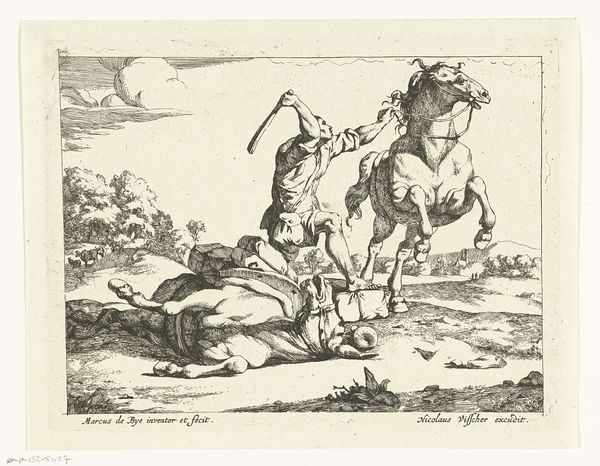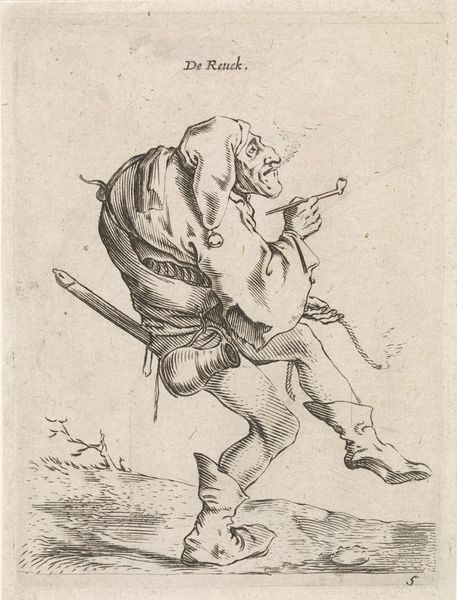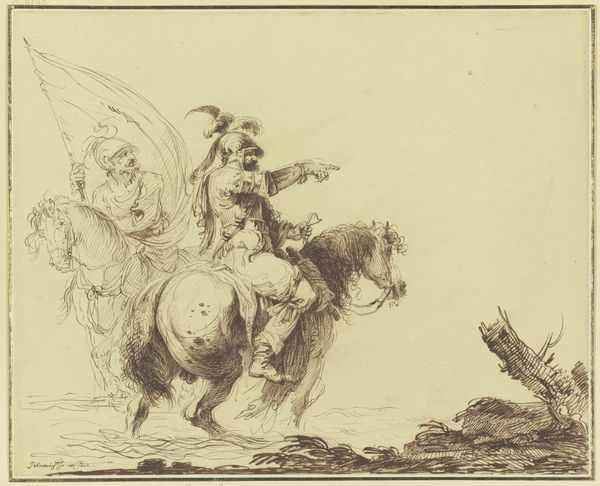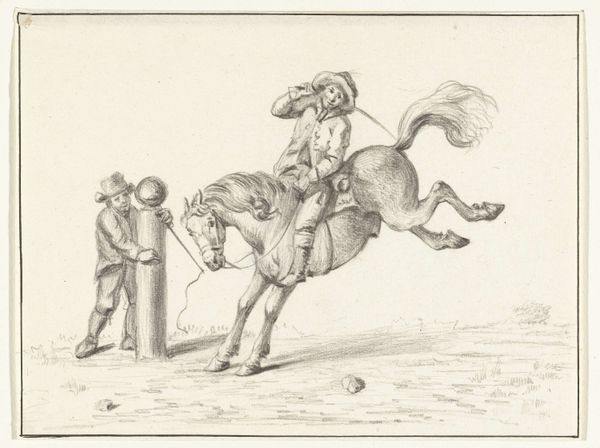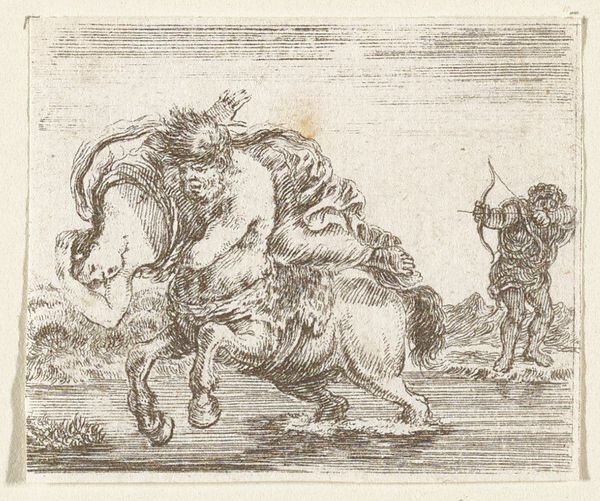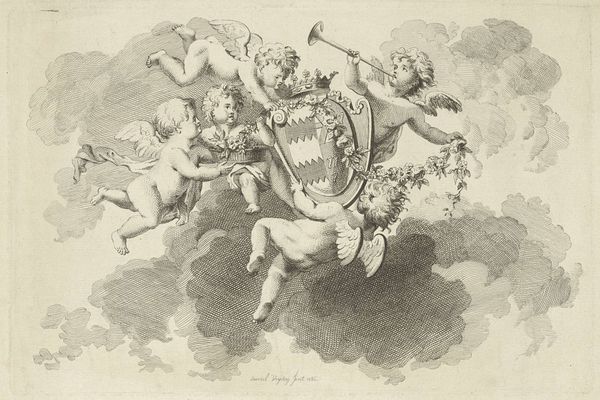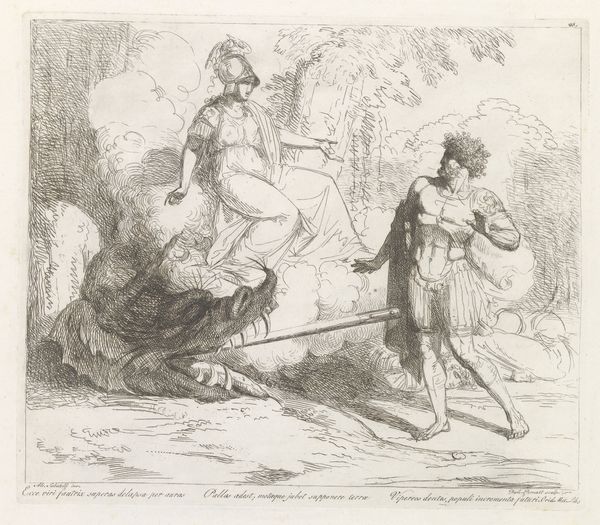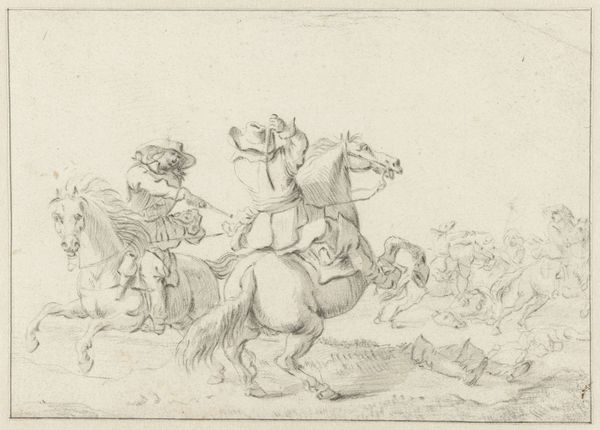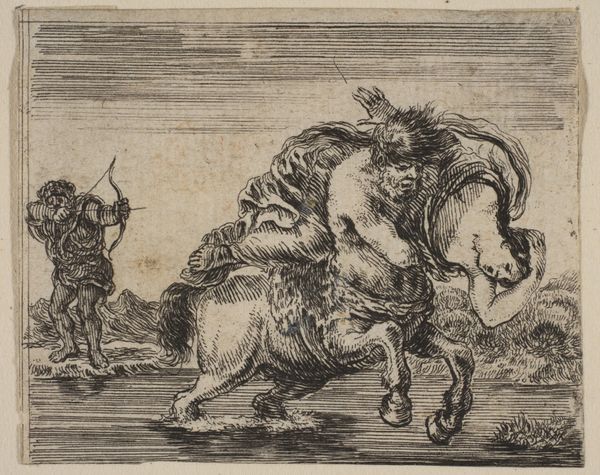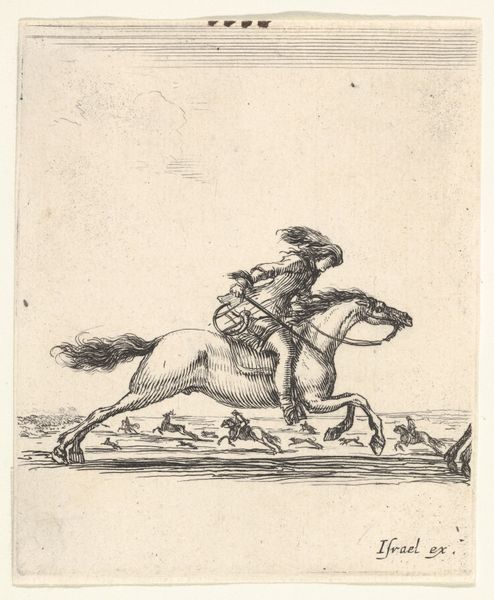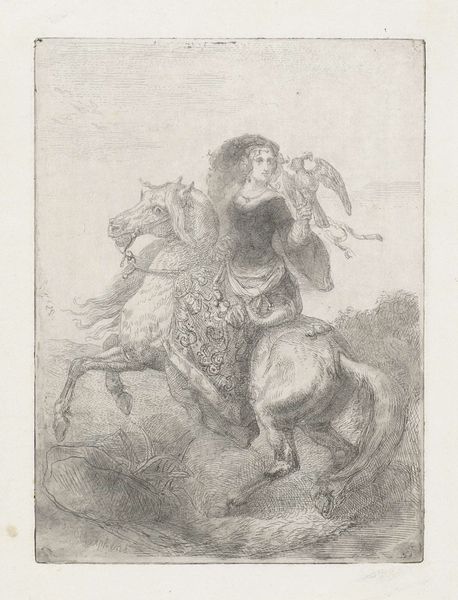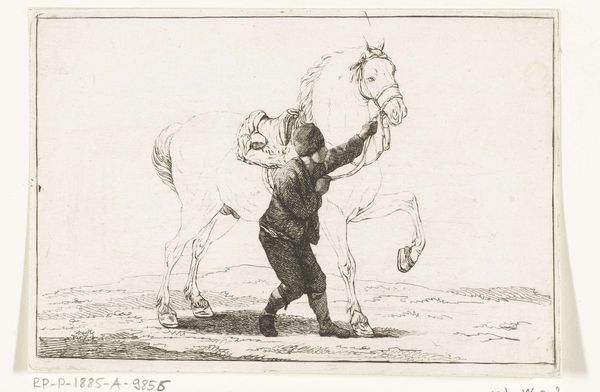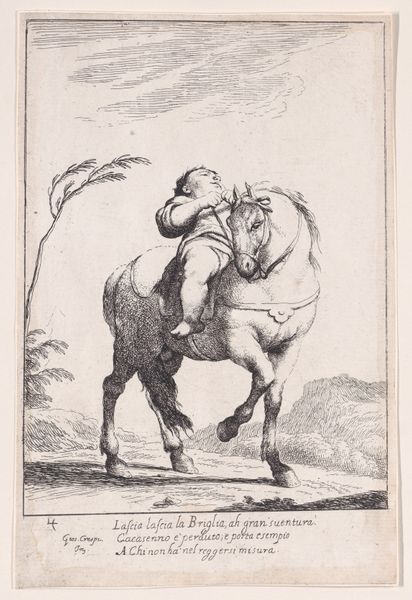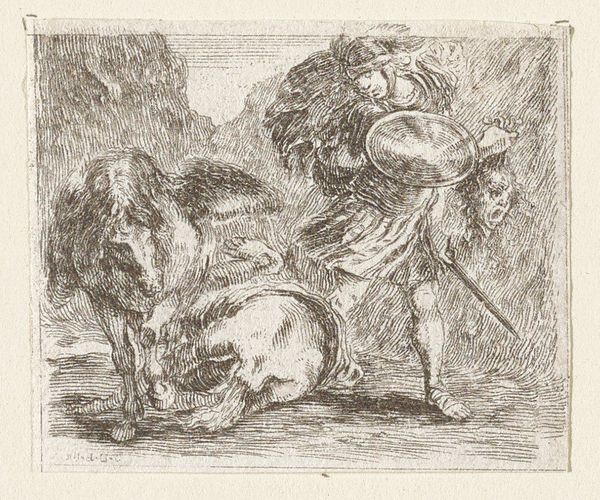
Dimensions: support: 190 x 231 mm
Copyright: CC-BY-NC-ND 4.0 DEED, Photo: Tate
Curator: Thomas Rowlandson, known for his satirical eye, likely produced this around the turn of the 19th century; its official title is "Ode for the New Year." Editor: My first impression is one of chaos. We have a corpulent figure atop a rearing horse, with a man falling beneath its hooves and another seemingly trying to strike them with something. Curator: It's a caricature, certainly. Rowlandson often lampooned the elite, and this piece likely speaks to the instability and perceived incompetence of the ruling class. Notice the figure brandishing what appears to be a makeshift weapon; that resonates with the simmering social unrest of the era. Editor: Right, but look at the figure on the horse. Despite the turmoil, there's a strange continuity in the symbols of power – the fancy coat, the horse itself as a long standing signifier of status. It's fascinating how even in chaos, those symbols persist. Curator: Indeed, and by exaggerating the figure’s size and precariousness, Rowlandson critiques the legitimacy of that power structure. The use of ink and wash lends a frantic, almost desperate energy, reflecting the anxieties of a society on the brink of change. Editor: So, beyond immediate satire, it's also a potent visual commentary on the era's deep social divisions and the fragility of authority. Curator: Precisely. Rowlandson captures that moment of upheaval and uncertainty, making this a powerful, relevant work even today. Editor: A reminder that symbols alone aren't enough to save a system.
Comments
tate 6 months ago
⋮
http://www.tate.org.uk/art/artworks/rowlandson-ode-for-the-new-year-t09196
Join the conversation
Join millions of artists and users on Artera today and experience the ultimate creative platform.
tate 6 months ago
⋮
This drawing was made whilst Rowlandson was working on a print satirising George III and his Poet Laureate, Joseph Warton. Warton's New Year Ode for 1787 was lampooned in Peter Pindar's poem Ode upon Ode. On the right is the masked figure of the clown, Harlequin. He has whacked the rump of the winged horse, Pegasus, a traditional emblem of poetic flight. The King falls backwards from his saddle, his hands in the air, while his hapless poet falls to the ground. Gallery label, September 2004
